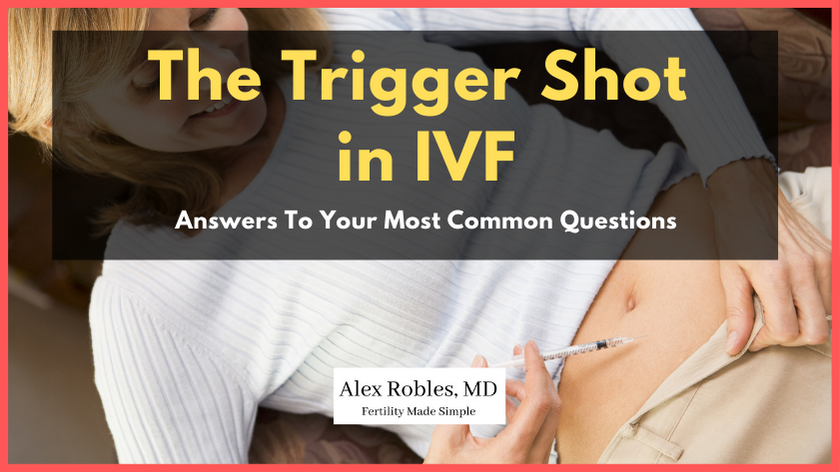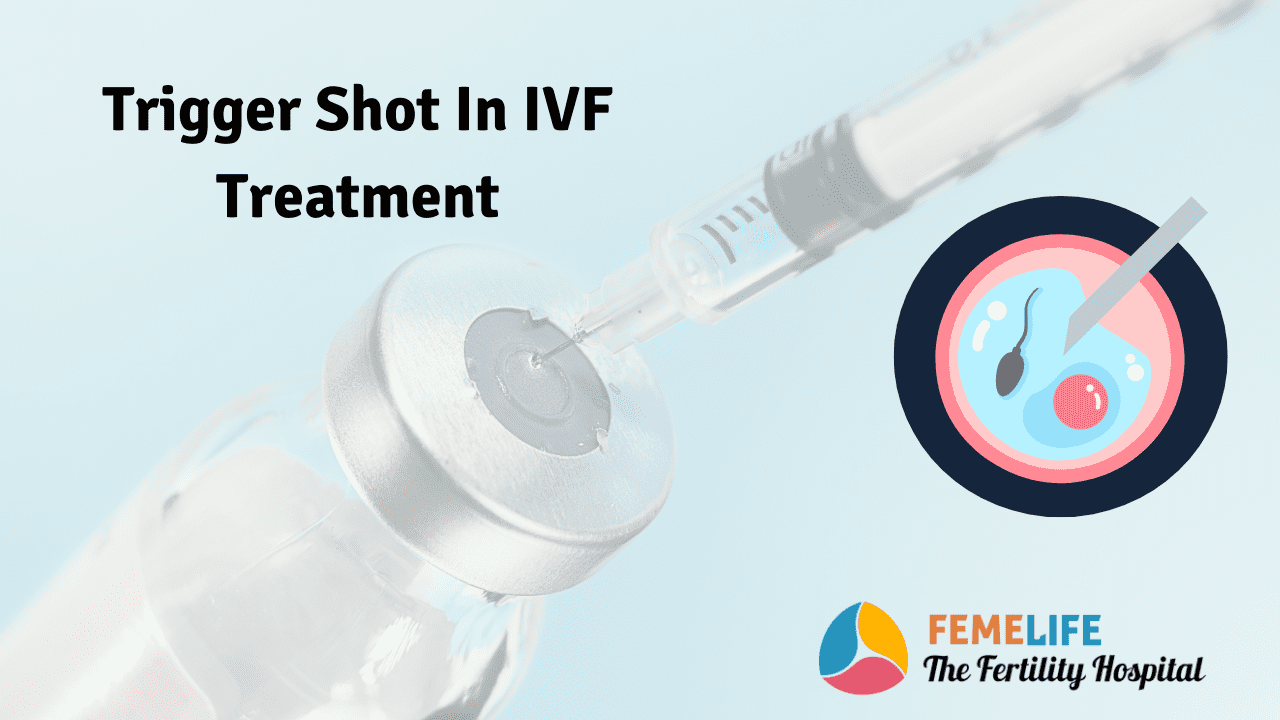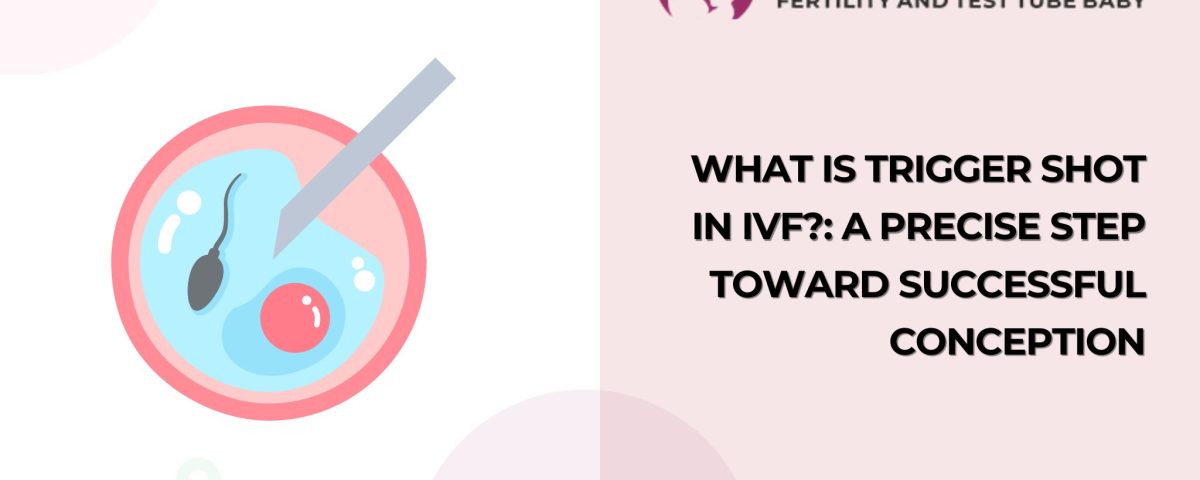
The Hidden Connection: How Stress Impacts IVF Success
April 25, 2025Trigger Shot IVF: Everything You Need to Know About This Game-Changing Step
Hey there! If you’re diving into the world of IVF (in vitro fertilization), you’ve probably heard about the “trigger shot.” It’s one of those terms that gets tossed around a lot, but what does it really mean? Why is it such a big deal? And what’s it like to actually go through it? Don’t worry—I’ve got you covered. This isn’t just another dry medical rundown. We’re going deep into the nitty-gritty, the stuff no one else talks about, and the practical tips that’ll make this step feel less like a mystery and more like something you can handle. Whether you’re a newbie to fertility treatments or a seasoned pro, let’s unpack the trigger shot together—step by step, with real talk and a little bit of fun along the way.
What Is a Trigger Shot in IVF, Anyway?
Let’s start with the basics. A trigger shot is a special injection you take during IVF to tell your ovaries, “Hey, it’s time to let those eggs go!” It’s usually a dose of human chorionic gonadotropin (hCG) or sometimes another hormone like Lupron, depending on your doctor’s plan. Think of it like the final buzzer in a basketball game—it signals the end of one phase (egg growth) and the start of the next (egg release).
Here’s how it works: after weeks of taking meds to grow your eggs, they’re almost ready but not quite. The trigger shot gives them that last push to mature and pop out during ovulation, perfectly timed for your egg retrieval. Without it, your eggs might not be ready when the doctor needs them, and timing is everything in IVF.
Why It’s a Big Deal
- Precision Timing: The shot sets off ovulation about 36 hours later, so your doctor can schedule the retrieval like clockwork.
- Egg Quality: It ensures your eggs are fully matured, which ups your chances of a successful embryo.
- Your Sanity: Knowing exactly when things are happening can ease some of that IVF stress (at least a little!).
Fun fact: some folks call it the “magic shot” because it feels like the moment everything comes together. But let’s be real—it’s not all fairy dust and sparkles. There’s a lot more to it, and we’re about to dig into the juicy details.
The Secret Life of the Trigger Shot: What No One Tells You
Okay, so you’ve got the gist of what it does, but what’s it really like? A lot of articles out there stick to the textbook stuff—dosage, timing, blah blah blah. But what about the behind-the-scenes scoop? Here’s where we get into the stuff that makes the trigger shot more than just a medical step—it’s a whole experience.
It’s a Midnight Mission
Most trigger shots happen late at night—sometimes at weird hours like 1 a.m. Why? Because your doctor wants the retrieval to happen 34-36 hours later, usually in the morning. So, picture this: you’re half-asleep, fumbling with a syringe in your bathroom, trying not to wake up the dog. It’s not glamorous, but it’s a rite of passage for IVF warriors.
The Emotional Rollercoaster
This shot isn’t just a needle—it’s a symbol. For some, it’s hope: “This could be it!” For others, it’s pressure: “What if it doesn’t work?” One woman I know said she cried the whole time she mixed her shot—not because it hurt, but because it felt like the tipping point of her whole journey. You’re not alone if you feel this way.
The “Phantom Pregnancy” Twist
Here’s a wild one: because the trigger shot often uses hCG (the pregnancy hormone), it can trick your body into feeling pregnant for a few days. Sore boobs, bloating, even a positive pregnancy test? Yup, that’s the hCG talking. It’s temporary, but it can mess with your head if you’re not ready for it.
Practical Tip: Set a timer for your shot—seriously. You don’t want to mess up the timing because you zoned out watching Netflix. And maybe keep a stash of chocolate nearby for emotional support.
How Does the Trigger Shot Fit Into Your IVF Journey?
To really get the trigger shot, you’ve got to see where it sits in the bigger picture. IVF is like a recipe, and this shot is the moment you turn on the oven. Let’s break it down.
Step-by-Step: Where the Trigger Shot Comes In
- Stimulation Phase: For 8-14 days, you take daily injections (like FSH or Follistim) to grow your egg follicles. Your doctor tracks them with ultrasounds and blood tests.
- The Trigger Moment: Once your follicles are big enough (usually 18-22 mm), it’s go-time. The trigger shot kicks off ovulation.
- Egg Retrieval: About 36 hours later, you’re in the clinic, under sedation, while they collect those precious eggs.
- Next Steps: The eggs meet the sperm, embryos grow, and you’re on to transfer or freezing.
Timing Is Everything
Miss the shot by even a few hours, and you could ovulate too soon—meaning no eggs to retrieve. One study from the Journal of Assisted Reproduction and Genetics (2023) found that precise timing of the trigger shot increased retrieval success rates by 15%. That’s huge!
✔️ Do: Follow your doctor’s exact instructions—down to the minute.
❌ Don’t: Guess or wing it. This isn’t the time to “figure it out as you go.”

Types of Trigger Shots: Which One’s Right for You?
Not all trigger shots are the same, and that’s where things get interesting. Your doctor picks based on your body, your cycle, and your risks. Let’s look at the main players.
1. hCG Trigger Shot (The Classic)
- What It Is: Brands like Pregnyl or Novarel mimic the natural hormone that triggers ovulation.
- Pros: Super reliable, widely used, great for most people.
- Cons: Higher risk of ovarian hyperstimulation syndrome (OHSS) if you’ve got a lot of follicles.
2. Lupron Trigger (The Curveball)
- What It Is: A GnRH agonist that triggers ovulation differently, often used with an antagonist protocol.
- Pros: Lower OHSS risk—perfect if you’re prone to overstimulation.
- Cons: Tricky to time, and not everyone responds to it.
3. Dual Trigger (The Power Combo)
- What It Is: A mix of hCG and Lupron for the best of both worlds.
- Pros: Boosts egg maturity and cuts OHSS risk.
- Cons: More expensive and complex to prep.
Dr. Jane Frederick, a fertility specialist, once said, “The right trigger shot is like picking the perfect key for a lock—it’s all about what fits your unique situation.” Your doc will decide based on your ultrasound results and hormone levels, so trust the process.
How to Give Yourself the Trigger Shot (Without Freaking Out)
Alright, let’s get practical. You’ve got the shot in hand—now what? If you’re new to injections, this part can feel intimidating. But you’ve got this! Here’s a step-by-step guide, plus some hacks to make it easier.
Step-by-Step Guide
- Prep Your Stuff: Gather your syringe, needle, alcohol wipes, and the meds. Double-check the dose with your clinic’s instructions.
- Mix It Up: If it’s hCG, you might need to mix powder with liquid. Swirl gently—don’t shake it like a smoothie.
- Pick Your Spot: Most go for the belly (an inch or two from the navel) or the upper thigh. Pinch some skin to make it less ouchy.
- Wipe and Strike: Clean the spot with an alcohol wipe, let it dry, then insert the needle at a 90-degree angle (or 45 if it’s a smaller one).
- Push and Pull: Inject the meds slowly, then pull the needle out. Press the spot with gauze if it bleeds a little.
- Celebrate: You did it! Reward yourself with a high-five or a snack.
Pro Tips for First-Timers
- Ice It: Numb the spot with an ice pack for 5 minutes beforehand.
- Breathe: Inhale as you pinch, exhale as you inject—it tricks your brain into relaxing.
- Buddy System: If you’re shaky, ask your partner or a friend to help.
One trick I’ve heard? Play your favorite song while you do it. It’s like a mini distraction party. And if you’re worried about pain, good news: most say it’s more of a pinch than a stab.
Side Effects: What to Expect After the Shot
The trigger shot isn’t just a one-and-done deal—it sticks around for a bit, and your body might have some opinions about it. Here’s what could happen, plus how to deal.
Common Side Effects
- Bloating: Your ovaries are working overtime, so you might feel puffy or full.
- Tender Breasts: Thanks, hCG! It’s like PMS on steroids.
- Mood Swings: Hormones + stress = a wild ride. You might cry at a dog food commercial (true story).
- Mild Cramping: Your ovaries are gearing up to release those eggs.
Rare but Serious: OHSS Warning Signs
Ovarian hyperstimulation syndrome is the big bad wolf of IVF. It’s rare, but watch for:
- Severe abdominal pain
- Nausea or vomiting
- Rapid weight gain (like 5+ pounds in a day)
If you spot these, call your doctor ASAP. A 2024 study in Fertility and Sterility showed OHSS rates dropped with Lupron triggers, so that’s a win for science.
Coping Hacks
✔️ Rest Up: Take it easy post-shot—no marathons, okay?
✔️ Hydrate: Water helps flush out the hormones faster.
❌ Don’t Panic: Most side effects fade in a day or two.

The Trigger Shot’s Dirty Little Secret: False Positives
Here’s something sneaky no one warns you about enough: that hCG in your trigger shot? It can fake a pregnancy test. Yup, you might pee on a stick a few days later, see two lines, and start planning a nursery—only to find out it’s just the shot lingering in your system.
How Long Does It Stick Around?
- hCG hangs out for about 10-14 days, depending on the dose (5,000 IU vs. 10,000 IU).
- Test too early, and you’re rolling the dice on a heartbreak.
Real-Life Tip
Wait at least 12 days post-shot before testing—or better yet, let your clinic do a blood test. One friend of mine kept a journal of her symptoms to figure out what was real vs. hCG trickery. Smart move!
Trigger Shot Myths: Busting the Big Ones
There’s a ton of chatter out there about trigger shots, and not all of it’s true. Let’s clear the air with some myth-busting.
Myth #1: “It Hurts Like Crazy”
- Truth: It’s a small needle—think flu shot, not horror movie. Most say the anticipation is worse than the sting.
Myth #2: “It Guarantees Success”
- Truth: It’s a key step, but IVF is a team effort. The shot gets the eggs ready; the rest depends on sperm, embryos, and a sprinkle of luck.
Myth #3: “You’ll Feel It Working”
- Truth: You won’t feel eggs popping out like popcorn. Any twinges are more likely from your ovaries being extra busy.
Dr. Robert Anderson, a reproductive endocrinologist, put it best: “The trigger shot’s job is simple—mature the eggs. The real magic happens in the lab and your body after that.”
What Science Says: Latest Research on Trigger Shots
Let’s geek out for a sec. Research is always tweaking how we use trigger shots, and 2024 brought some cool updates.
New Findings
- Dual Triggers Rule: A 2024 study in Human Reproduction found dual triggers (hCG + Lupron) boosted egg yield by 20% in women with low ovarian reserve.
- Timing Tweaks: Another paper showed retrieval at 35 hours (instead of 36) slightly improved egg quality for older patients.
- OHSS Drop: Lupron triggers cut OHSS rates by nearly 30% compared to hCG alone, per Fertility and Sterility.
What This Means for You
Ask your doctor about these options! If you’re over 35 or at risk for OHSS, these tweaks could be game-changers. Science is on your side.
Trigger Shot Hacks: Insider Tips from IVF Vets
You won’t find these in a pamphlet, but they’re gold from folks who’ve been there.
Hack #1: The Warm-Up
- Keep your meds at room temp before mixing. Cold shots sting more.
Hack #2: The Distraction
- Watch a funny video while you inject. Laughter beats nerves every time.
Hack #3: The Post-Shot Ritual
- One woman swore by a warm bath after her shot to ease cramps and calm her mind. Try it!
I heard about a gal who turned her trigger night into a mini celebration—candles, music, the works. Why not make it a moment to remember?
Your Trigger Shot Day: A Sample Timeline
Wondering what it’s like in real life? Here’s a peek at a typical trigger shot day, based on stories from the trenches.
9:00 PM
- Clinic calls: “Shot’s at 1 a.m. Don’t miss it!”
- You set three alarms, just in case.
12:45 AM
- You’re up, groggy, prepping the syringe. Coffee’s brewing for moral support.
1:00 AM
- Shot time! You nail it, despite shaky hands. Victory dance optional.
1:15 AM
- Back to bed, dreaming of tiny embryos (or at least trying to sleep).
Next Day
- Rest, hydrate, and gear up for retrieval tomorrow. You’re a rockstar.
FAQs: Your Trigger Shot Questions, Answered
Got questions? I’ve got answers. These are the ones I hear all the time—straight from the IVF grapevine.
Q: Can I mess up the shot?
- A: Not really, as long as you follow directions. Wrong timing is the bigger risk—stick to the clock!
Q: Will I gain weight?
- A: Maybe a pound or two from bloating, but it’s temporary. No crash diets needed.
Q: What if I feel nothing?
- A: Totally normal. It’s a quiet worker—no fireworks required.

The Emotional Side: Coping with the Trigger Shot Vibes
Let’s not skip this part. The trigger shot isn’t just physical—it’s a mental marathon too. Here’s how to keep your head in the game.
Why It Hits Hard
- It’s the “point of no return” vibe. After this, retrieval’s locked in, and the stakes feel higher.
- Hormones are already messing with you—add stress, and it’s a party.
Survival Strategies
- Talk It Out: Vent to a friend, your partner, or even a pet. They don’t judge.
- Journal It: Scribble down your fears and hopes. It’s cheaper than therapy.
- Treat Yourself: Post-shot ice cream? Yes, please.
One IVF mom told me she made a playlist of “power songs” for her shot night—think Beyoncé and Lizzo. Whatever works, right?
Beyond the Shot: What’s Next?
The trigger shot’s just one piece of the puzzle. After it, you’re on to retrieval, then embryo creation, and maybe a transfer. Here’s a quick look ahead.
Egg Retrieval
- 36 hours post-shot, you’re in the clinic. It’s quick (20-30 minutes), and you’re out cold for it.
Embryo Watch
- Eggs meet sperm, and you wait 3-5 days to see how many make it. Nerve-wracking, but exciting!
The Waiting Game
- Transfer or freeze? Either way, the trigger shot got you here. Pat yourself on the back.
Let’s Chat: Your Trigger Shot Stories
Alright, you’ve made it through the deep dive! Now it’s your turn. What’s your trigger shot story? Did you ace it, freak out, or turn it into a midnight adventure? Drop a comment below—I’d love to hear! And if you’ve got questions I didn’t cover, ask away. Let’s keep this convo going, because no one should feel alone on this wild IVF ride.
